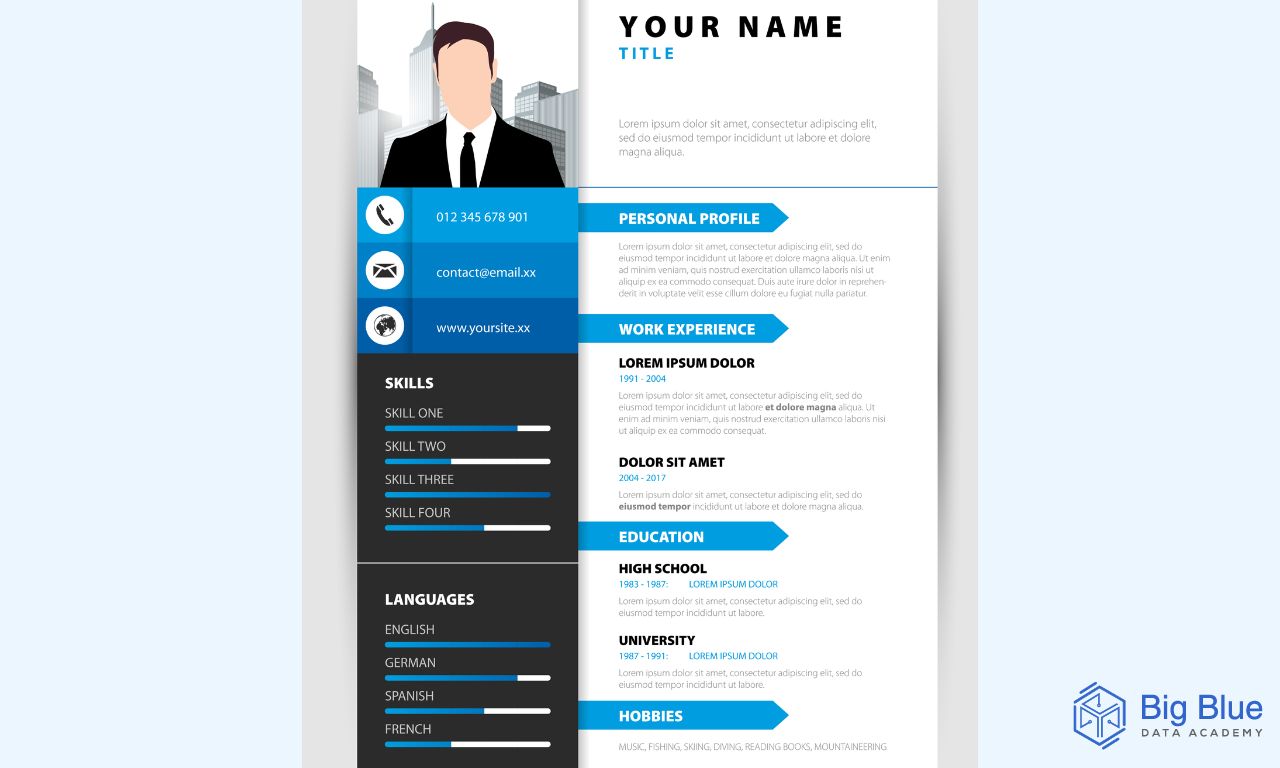How to Create a Data Scientist Resume (2023 Guide)
If you're a data scientist looking for a job, one of the most critical elements in this process is none other than your resume.
A resume is your first opportunity to make an impression on potential employers, and it's important to stand out from the crowd to capture their interest and secure your next interview as a data scientist.
In this article, we will discuss how to create a strong resume as a data scientist that will increase your chances of getting an interview and, why not, a job offer.
First, let's start with the basic elements of a data scientist resume.
Basic Elements of a Data Scientist Resume
If you want to create a successful resume (CV) as a data scientist, there are some basic elements that can help you stand out from the crowd and attract the attention of hiring managers.
After all, your resume is the first impression someone who doesn't know you forms about your skills, and it needs to create a positive impression, since the competition is fierce.
Below, we describe some basic elements you can include in your resume.
Let's take a detailed look.
Create a Clear and Concise Summary
The summary or introduction of who you are should be brief and highlight your skills and experience as a data scientist.
This section should be tailored to the job position you're applying for and mention specific skills or achievements related to that position.
Highlight Your Technical Skills
As a data scientist, it's crucial to present and emphasize your proficiency in tools and programming languages like Python and R.
It's a good idea to list your hard skills in a separate section and mention any certifications, bootcamps, or training you've completed.
Showcase Your Experience
Work experience is critical in showcasing your ability to apply your skills to real-life scenarios.
However, with the resources available online today, you can easily learn and create your own projects in Python, machine learning, and more.
Especially if you're at the beginning of your career and applying for entry-level positions, projects and data science bootcamps where you gain practical knowledge are the most effective way to prove that you can apply your technical skills in a practical setting.
Describe Your Education and Certifications
While practical knowledge is of utmost importance, education and certifications are equally important.
Be sure to highlight your level of education, including the institution where you studied, the name of your degree, the degree you received, and if applicable, any honors you received.
You can also mention any achievements during your studies or in a previous job using specific and measurable examples.
Using numerical data not only shows your track record of success and your ability to bring value to a new company, but it's also a prerequisite for a data scientist's role.
Additionally, you can mention any foreign languages you may know or even any volunteer work, regardless of the field.
After all, soft skills and volunteer work are something companies value highly these days.
Use Easy Formatting and Structure
As mentioned earlier, before sending your resume, you need to carefully read the job description and adjust your resume accordingly to match the specific requirements of the position.
However, beyond this step, it's reasonable to use simple formatting and language.
Hiring managers, as expected, review many resumes, so they don't have time to read long and complex resumes.
Therefore, try to keep your resume as clean as possible.
For example, you can use bullet points to make your resume more readable and easier for hiring managers to scan for the main qualifications.
Furthermore, make sure it looks as professional as possible and correct any errors or typos.
Now, let's see an example of a data scientist resume for better understanding.
Data Scientist Resume Example
A general structure you can follow for your resume is as follows:

General Structure
[Your Name]
[Your Address]
[Your Phone Number]
[Your Email]
Objective (Optional):
[You can optionally include a brief statement about what you hope to achieve in the role of a data scientist. This depends on you and could include your interest, for example, in analyzing large datasets or specific goals you have in mind.]
Summary:
[In this section, you can provide a brief overview of your qualifications, emphasizing your experience and skills in data and programming languages. This section should be concise and to the point.]
Education:
[Here, you can mention details about your education, including your degree, the name of the institution, and any relevant coursework or academic projects.]
Skills:
[In this section, you can mention technical skills in bullet points, such as your proficiency in data visualization tools and database management systems.]
Experience:
[In this section, include your work experience as a data scientist, starting with your most recent position.
For each role, it's good to present the following information:
- The name of the company you worked for
- The dates you worked there
- Your job title
- A brief overview of your responsibilities in that role
- Any contributions or achievements you had that helped the company.]
Certifications:
[In this section, you can mention relevant certifications or participation in a program or bootcamp.]
What is more, there are many free resume templates that you can use to create your resume quickly and easily.
As a last piece of advice, it's also important to pay attention to the language in which you will write your resume.
In some cases, if a resume is not written in the desired language (usually English), which is stated in the job posting, hiring managers may not bother to review it, as it can leave a negative impression.
Ramping Up
So, we've seen how you can create a resume that will make you stand out as a data scientist.
If you are intrigued and want to learn more about the promising field of data science in general, follow us for more educational articles and we will keep you posted!


.jpg)